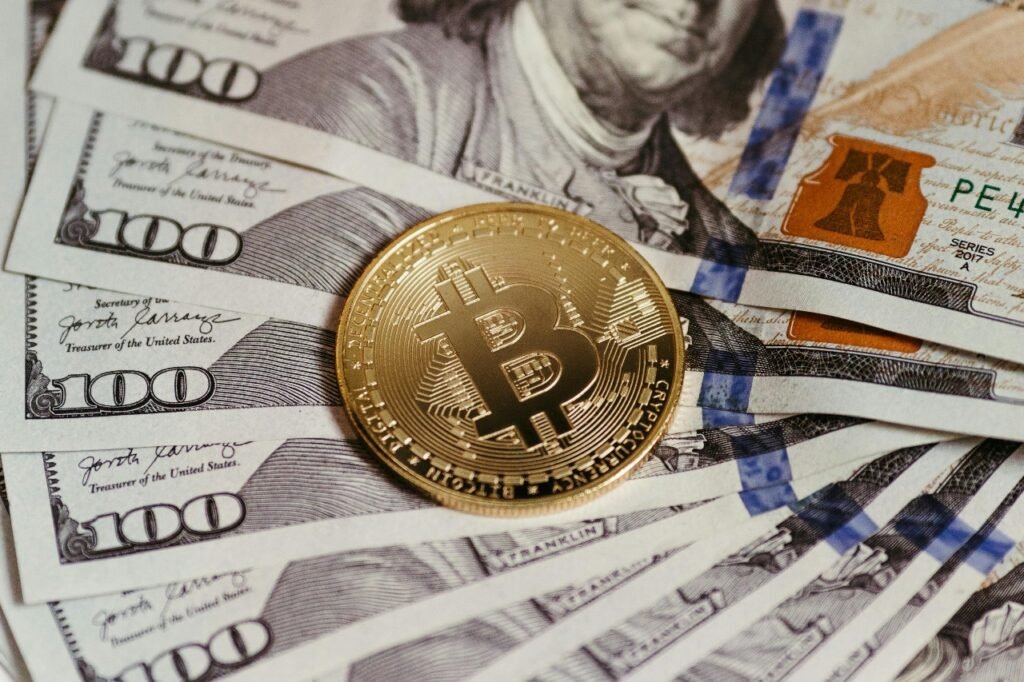Secure Crypto Wallet Guide for Modern Digital Savvy
In an era where cryptocurrencies are becoming increasingly mainstream, understanding how to protect your digital assets is critical. Whether you’re a casual investor checking out the latest altcoins or a seasoned trader diversifying into DeFi and Web3 projects, the way you store your crypto can make the difference between financial freedom and serious loss.
Enter the Secure Crypto Wallet: your gateway to safely holding, transacting, and managing digital assets. In this comprehensive guide, we dive into everything you need to know—definitions, options, real-world examples, pros and cons, actionable tips, frequently asked questions, and a roadmap to staying secure in 2025 and beyond.
And hey, if you’re a Global Crypto Sports fan (yes, that’s the primary keyword for my news-related site!), you know that even a single misplaced key can derail a tournament of profits. Whether you’re tracking blockchain‑based sports tokens or exploring DeFi protocols tied to sports franchises, this guide ensures your crypto stays in your control.

1. What Is a Secure Crypto Wallet?
A Secure Crypto Wallet is a tool—either hardware, software, or paper—that enables you to safely store, send, receive, and manage cryptocurrency. Unlike a bank account, crypto wallets don’t hold your funds; they store private keys that grant access to your assets on the blockchain.
Why this matters now:
- Crypto markets are more accessible, with more retail participants and institutional adoption.
- Scams, hacks, and phishing attacks are on the rise.
- Regulations and DeFi/Web3 platforms are evolving rapidly.
Keeping your crypto secure isn’t just prudent—it’s essential for long-term success, whether you follow the latest Global Crypto Sports token launches or are exploring NFT-based collectibles tied to sporting franchises.
2. Key Terms You Should Know
Before diving into wallet types, let’s clarify essential crypto‑related terms in a beginner‑friendly way:
- Blockchain: A decentralized, digital ledger where every transaction is recorded across a network of computers—think of it as an extremely secure database.
- DeFi (Decentralized Finance): Financial services (like lending, borrowing, trading) that operate without traditional intermediaries (like banks), enabled by blockchain technology.
- Web3: The next generation of the web, emphasizing decentralization, user control, and interoperability—powered by crypto and blockchain.
- Seed Phrase (Recovery Phrase): A set of 12–24 words that allow you to restore access to your wallet and funds. Think of it like a super‑important password backup.
- Private Key: A long alphanumeric code that proves ownership of crypto assets and gives authority to move them.
- Public Key / Address: A shortened version you share with others to receive crypto, like an email address for your wallet.
These terms underpin how wallets function and why keeping things secure (like your seed phrase!) is non-negotiable.
3. Types of Crypto Wallets: Hot vs Cold vs Decentralized
Choosing the right wallet depends on your needs—security, convenience, usability, or frequency of transactions.
3.1 Hot Wallets
These are wallets connected to the internet.
- Software Wallets (Desktop): Installed on your PC or laptop.
- Mobile Wallets: Apps on your smartphone (iOS/Android).
- Web Wallets: Browser‑based, often provided by exchanges.
Pros: Easy to access for frequent trading, simple DeFi participation, often free.
Cons: More vulnerable to hacks, malware, and phishing.
3.2 Cold Wallets
These are offline wallets, not connected to the internet.
- Hardware Wallets: Physical devices (USB-like) that sign transactions offline.
- Paper Wallets: Printed QR codes with keys—offline but fragile.
- Air‑gapped Devices: Old phones or computers completely isolated from the internet.
Pros: Strong security, ideal for long-term storage.
Cons: Less convenient, risk of physical damage/loss.
3.3 Decentralized Wallets
Also called non-custodial wallets—only you control the private keys.
Pros: Full control over assets, no third-party risk.
Cons: You’re fully responsible—lose your seed phrase, lose your funds.
4. Best Crypto Wallet 2025: What to Look For
When selecting the best crypto wallet 2025, consider:
- Security: strong encryption, reputable firmware updates, puncture-resistant design.
- Reputation & Audits: audited source code, trustworthy brand.
- Multi‑chain Compatibility: ability to handle Bitcoin, Ethereum, tokens, NFTs, etc.
- User Experience (UX): easy setup, clear interface, helpful recovery flows.
- Backup & Recovery: seamless backup options, multiple language support for seed phrases.
- Mobile/Desktop Integration: for on‑the‑go needs or desktop trading.
- Support & Community: responsive support, active user community in forums, Global Crypto Sports, or DeFi chat groups.
Examples of strong contenders:
- Hardware: Ledger Nano X/S, Trezor Model T
- Mobile: Trust Wallet, MetaMask Mobile
- Desktop/Web: Exodus, Atomic Wallet
Each balances security vs convenience differently.
5. Real‑World Examples & Case Studies
Example 1: $1 Million Loss—Hot Wallet Hack
A day trader used a web wallet linked to a low‑security email. They clicked a phishing link and lost access to a hot wallet with $1 million in tokens tied to a DeFi sports betting protocol. No recovery was possible.
Lesson: Hot wallets offer convenience but require action—2FA, whitelist addresses, and hardware protection.
Example 2: Hardware Wallet Saves the Day
A long-term holder stored most of their crypto—including Web3 sports NFTs—in a hardware wallet. When the exchange they used got hacked, only funds on the exchange were lost; their hardware wallet remained safe.
Lesson: Cold storage is invaluable for safeguarding larger holdings, especially when markets dip and hacks spike.
Example 3: Seed Phrase Disaster Averted
Someone wrote their seed phrase on post-its distributed in their apartment, and as seasons changed, they lost several. But because they’d stored a secure digital copy offline (encrypted) and tested recovery, they restored access quickly.
Lesson: Proper backup—physical and encrypted digital—is critical.
6. Pros and Cons: Choosing the Right Option
| Wallet Type | Pros | Cons |
|---|---|---|
| Hot Wallet | Fast, convenient, easy to use for trading | Susceptible to online attacks, phishing, malware |
| Cold (Hardware) | High security, ideal for long-term holdings | Moderately expensive, less accessible for trading |
| Paper Wallet | Offline, very low cost | Physical damage, no user interface, risky to duplicate |
| Decentralized/Nocial | Full control, no central authority risk | Responsible for backups, steep learning curve |
7. Benefits of a Secure Crypto Wallet
- Protection from hacks and exchange collapse
- True self‑custody—you fully own and control your assets
- Freedom to use DeFi / Web3 services securely
- Peace of mind for long-term holders
- Support for emerging assets, like sports-based tokens tied to Global Crypto Sports
8. Potential Risks & How to Mitigate Them
Risks:
- Malware and phishing targeting hot wallets
- Physical loss or damage of hardware/paper
- Human error: misplaced seed phrases, typo’d addresses
- Supply chain attacks (tampered devices)
- No backup → permanent loss
Mitigation Strategies:
- Always buy hardware wallets directly from trusted manufacturers.
- Enable multi-factor authentication (2FA) on hot wallets.
- Use passphrases in addition to the seed phrase.
- Store seed phrase safely: use metal backup plates, offline backups, and safe deposit boxes.
- Test your backup by restoring it in a safe environment (e.g. empty test wallet).
- Keep software updated.
- Never share your seed phrase or private key.

9. Actionable Advice for Beginners & Intermediate Users
For Beginners:
- Start with a reputable mobile or desktop wallet (e.g., Trust Wallet or Exodus).
- Enable all available security features like PIN, biometrics, and backups.
- Practice sending small test transactions before big ones.
- Write your seed phrase down on paper, store it securely.
- Follow crypto news sources—including Global Crypto Sports—to stay updated on wallet vulnerabilities or scams.
For Intermediate Users:
- Use a hardware wallet (e.g., Ledger Nano X) for long-term holdings.
- Split your assets: keep small funds in a hot wallet for everyday use, and the rest in cold storage.
- Consider multi-signature (multi-sig) wallets for added security.
- Regularly audit your backup processes and test recovery.
- Stay connected with communities focused on DeFi security, Web3, and crypto sports integrations.
10. Vital Elements: Seed Phrase, Wallet Backup, Security Practices
Seed Phrase:
- Usually 12–24 words, generated offline.
- Don’t store it digitally unencrypted.
- Use a secure metal plate resistant to fire, water, and corrosion.
Wallet Backup:
- Have redundancy: physical + encrypted digital copy.
- Store backups in separate, secure locations (e.g., home safe, safe deposit box).
- Label storage devices clearly, but discreetly.
Security Practices:
- Keep firmware and software always updated.
- Only download wallets from official sources.
- Watch for phishing: double-check URLs, never enter your seed phrase online.
- Consider a passphrase (additional word on top of the seed) for more protection.
11. FAQ: Secure Crypto Wallet Guide
Here are 7 common questions beginners and intermediates often ask:
Q1: What is the most secure crypto wallet?
Answer: Generally, hardware (cold) wallets like Ledger Nano X or Trezor Model T are considered most secure, provided you buy them from trusted sources and follow proper backup procedures.
Q2: Can I recover my funds if I lose my seed phrase?
Answer: No—you cannot recover the wallet or funds without the seed phrase or backup. That’s why safe, redundant backup is vital.
Q3: What’s the difference between a hot wallet and a cold wallet?
Answer: A hot wallet is connected to the internet (mobile, web, desktop), offering convenience but higher risk. A cold wallet is offline (e.,g. hardware, paper), offering strong security but less convenience.
Q4: Are decentralized wallets safer than exchange wallets?
Answer: Yes—decentralized (non‑custodial) wallets give you full control, removing exchange‑related risks. But you’re also solely responsible for your security and backups.
Q5: How do I choose the best crypto wallet 2025?
Answer: Look for wallets with strong security architecture, ease of use, multi‑chain support, good user reviews, firmware updates, and reputable audits.
Q6: Should I use multi‑sig for my wallet?
Answer: Multi‑signature (multi‑sig) setups require multiple private keys to approve transactions, enhancing security. They’re especially useful for group funds or high‑value holdings.
Q7: How do I keep my crypto safe when using DeFi or Web3?
Answer: Use a Secure Crypto Wallet to connect to platforms. Enable hardware wallet signing, whitelist addresses, verify contract interactions, and don’t expose your seed phrase.
12. Conclusion & Call to Action
In today’s fast-evolving crypto landscape, mastering wallet security is not optional—it’s foundational. Whether you’re transacting, exploring DeFi, diving into Web3, or following the latest Global Crypto Sports token launches, keeping your assets secure ensures your digital journey remains rewarding and risk‑managed.
Key takeaways:
- Use Secure Crypto Wallets that match your security needs, balancing convenience and safety.
- Embrace best practices: hardware wallets for long‑term storage, careful seed phrase handling, real backups, and software hygiene.
- Stay informed via trusted sources—including your go-to news hub for crypto sports, Global Crypto Sports—so you’re ahead of scams and vulnerabilities.
What you can do now:
- Choose a wallet that fits your experience and portfolio size.
- Set up and secure your seed phrase using a metal backup.
- Perform a test recovery to confirm you can restore access.
- Keep following community news, especially on DeFi security and new wallet innovations.
- Share this guide with fellow crypto-savvy friends—let’s build a safer ecosystem, one wallet at a time.
Thank you for reading this comprehensive Secure Crypto Wallet Guide for Modern Digital Savvy. I hope you found it informative, actionable, and beginner-friendly. If you have further questions—curious about multi‑sig setups, mobile vs hardware comparisons, or crypto sports token storage—feel free to ask!
Stay secure. Stay savvy. Happy HODLing!
